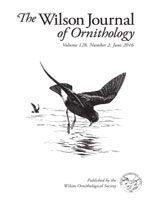Avian mortality from collisions with windows and buildings is one of the top sources of anthropogenic mortality of birds. Each year in the United States, an estimated 100 million to one billion birds die from window collisions. Many studies of bird-window collision mortality have aimed to identify architectural, landscape, and species-specific factors that may influence collision rates, but little research has assessed the potential for spatiotemporal variation in collision mortality. We studied window collision mortality at 42 residential houses located within an urban landscape, along the shores of Lake Superior in Duluth MN, USA from 2006–2009 to quantify window-related fatalities during migration. The rate of window collision mortality was modeled as a function of house location and season using Poisson regression. We also conducted carcass distribution trials to estimate scavenging and detection rates, and analyzed the resulting data using a multistate Markov model. We used hierarchical models of scavenging probability to compare the relationship between scavenging rates and six measured covariates. Models for collision mortality and scavenging were evaluated using Akaike’s Information Criterion (AIC). The adjusted number of birds killed (Nk) over the full course of monitoring was estimated using the Horvitz-Thompson estimator. A total of 40 species and 108 individual birds were recorded as window kills. Fatalities increased with distance from the city center, were higher at houses on the lake side of the study site, and on windows facing Lake Superior. Scavenging rates also increased with distance from the city center, with small carcasses being removed more quickly than large carcasses, and removal rates decreasing over time for all carcass sizes. Because of the low detection probability of homeowners, combined detection by both homeowners and researchers was <20%. Although mortality and scavenging rates were not uniformly distributed, we estimated an adjusted mortality rate of ~11–16 birds per house during the study period. Mortality estimates for all residential houses on Minnesota Point (n = 520) during the study period (n = 211 days) was 5,819–8,382 birds, ~1,421 birds per season. Results suggest spatiotemporal variation in both mortality and scavenging rates within our study area, both of which increased with distance from the city center. Houses with highest collision mortality also had the highest scavenging rates. Our results are consistent with other studies that have observed heterogeneity in mortality and scavenging rates associated with local structural and landscape level variables. Documenting patterns associated with increased collision mortality will be important in identifying locations that may pose a greater risk to birds.
How to translate text using browser tools
30 June 2016
Variation in bird-window collision mortality and scavenging rates within an urban landscape
Annie M. Bracey,
Matthew A. Etterson,
Gerald J. Niemi,
Richard F. Green
ACCESS THE FULL ARTICLE

The Wilson Journal of Ornithology
Vol. 128 • No. 2
June 2016
Vol. 128 • No. 2
June 2016
avian mortality
detectability
Great Lakes
migration
multistate Markov model
scavenging
window kills




